This week has been relatively quiet on the dragonfly front with only a few worthwhile sightings and even less photo opportunities.
Having missed an opportunity to seek out a resident Lesser Emperor at Blashford on Tuesday and hearing the reported sighting on Wednesday, Sue & I headed over to Blashford Lakes on Friday in the hope of catching a glimpse.
We arrived just after 11.00am and within half an hour had our first sighting. Just a brief glimpse as he battled with the patrolling male Emperor before disappearing into the trees.
He appeared a further 4 times over the next 2 hours and frustratingly refused to perch for a photo opportunity, At least the Male Emperor did.
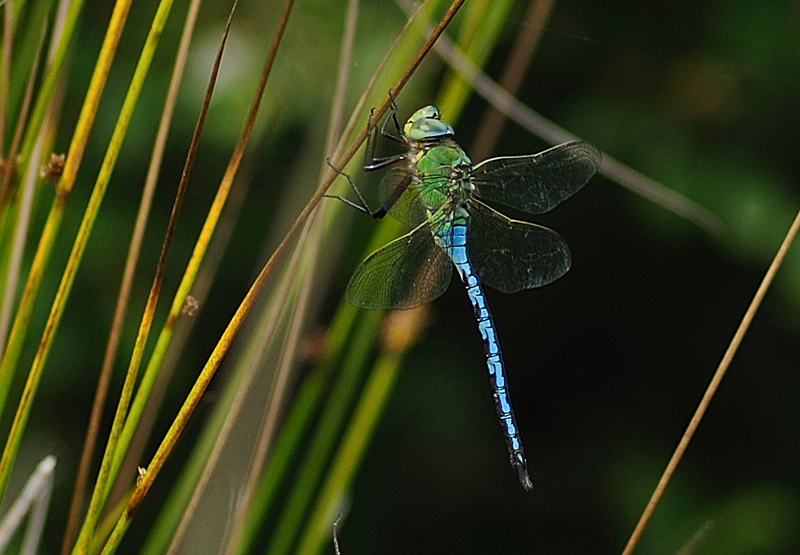
We also had a male Brown Hawker hawking the clearing and a female providing a close opportunity for a photograph when she decided to oviposit around by my feet.
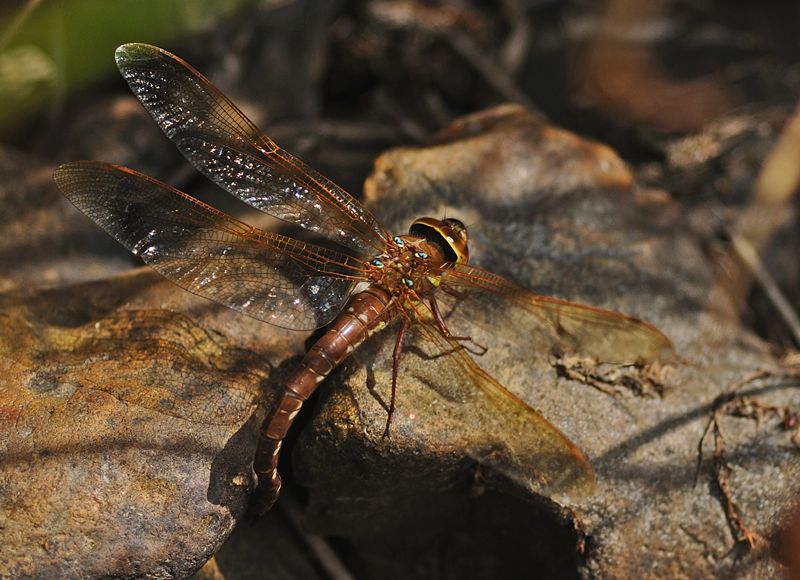
The SW corner of the pond also was a riot of damsel activity with Common Blue, Azure, Blue-tailed and Red-eyed all vying for territory.
After spending 4 hours at the spot we briefly called into the centre pond hoping for some activity, but as nothing presented itself we returned to Ellingham Pound with a couple of other photographers hoping maybe to catch a late afternoon glimpse of the elusine Lesser Emperor, but alas it wasn’t to be.
Personally I reckoned it was too late and too cool for a sighting, but I had been informed that he had been spotted and photographed at 5.00pm the previous Wednesday.
Still, we had a few more Brown Hawkers and a few Emperors to provide some late afternoon entertainment before we called it a day
On Saturday we tried again, but no luck and not much other activity either. Sue managed to find a freshly-emerged damsel which crawled onto her hand to pump up it’s wings.
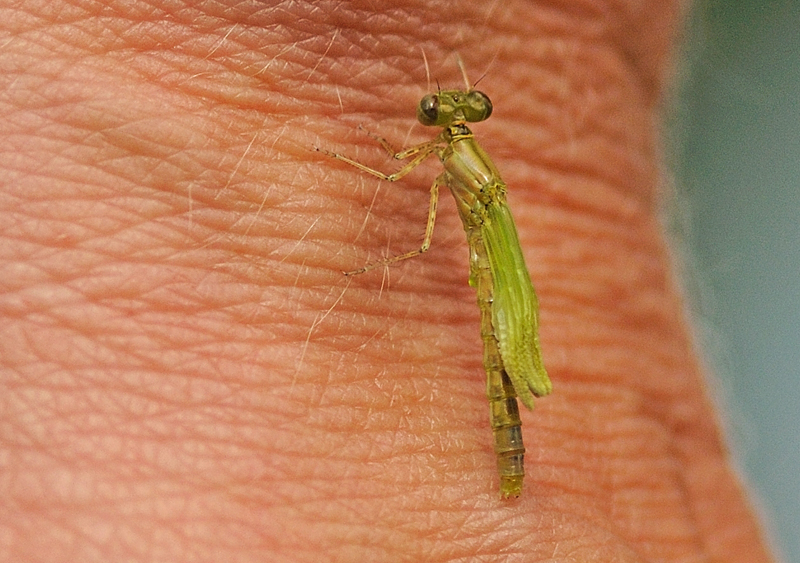
I’m inclined to go for a freshly-emerged Common Blue as these seem to be the predominant species on site, but Phil suggested that the majority of the tenerals flying were Blue-taileds.
Sunday we called in to the pond late afternoon and are pleased to report the recent downpours have refreshed the water levels and although activity was muted we did have a perched Migrant Hawker, a patrolling Emperor and a Southern Hawker.
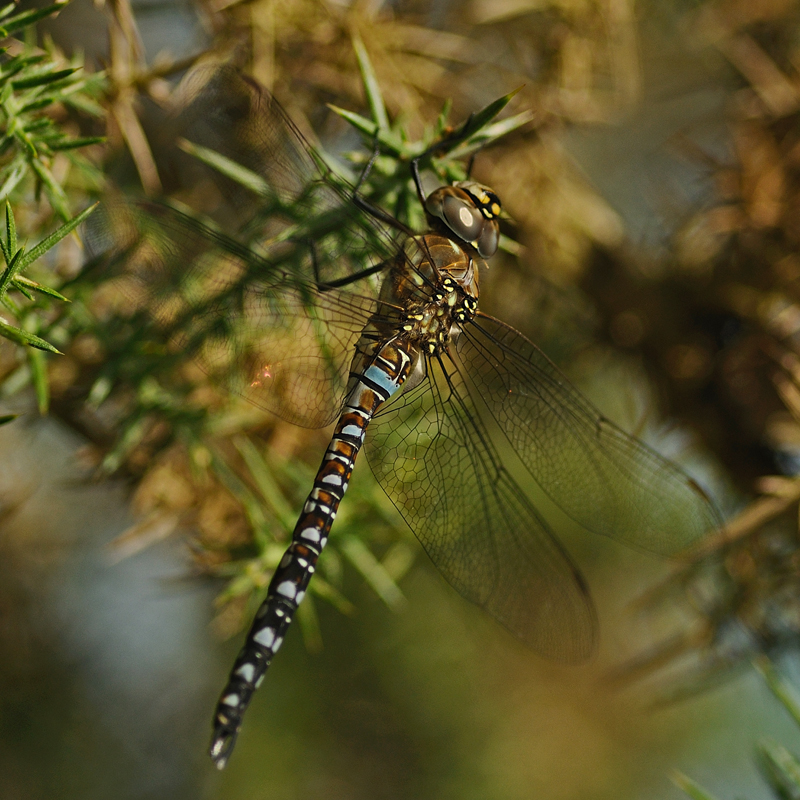
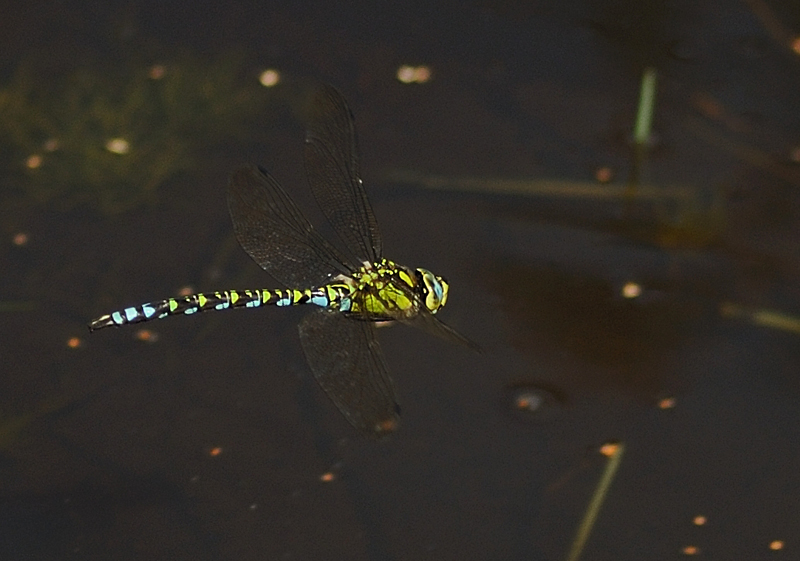
On Monday I kayaked along a stretch of the Basingstoke Canal which offered the perfect opportunity to scout the area. There was a particular stretch with reeds on both sides with a decent damsel presence, and we had close views of a Southern Hawker and 2 Brown Hawkers – the latter surprisingly tolerant of our presence.
Tuesday looked good, so I promised myself a return visit to Studland Heath. Working on a tip off I parked close to the ferry and explored the area around the NE west of the peninsula.
It wasn’t long before I came across the first Ruddy Darters and further exploration revealed a population in the hundreds. Previously I’ve hailed Higher Hyde Heath as the best spot to observe and photograph Ruddies, but after today Studland Heath certainly takes the prize.
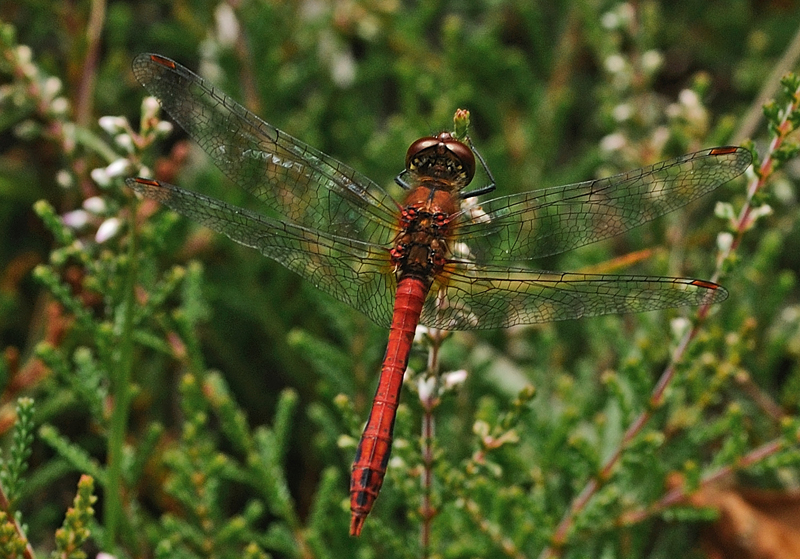
Other species seen in the area were a lone Southern Hawker, Emerald and Common Blue Damselflies and a few wandering Black-tailed Skimmers.
From there I revisited the spot further along the NW shore of Little Sea. Along with more of the above were Blue-tailed and Small Red Damsels, Emperors and Common Darters, but surprisingly no more Hawkers.
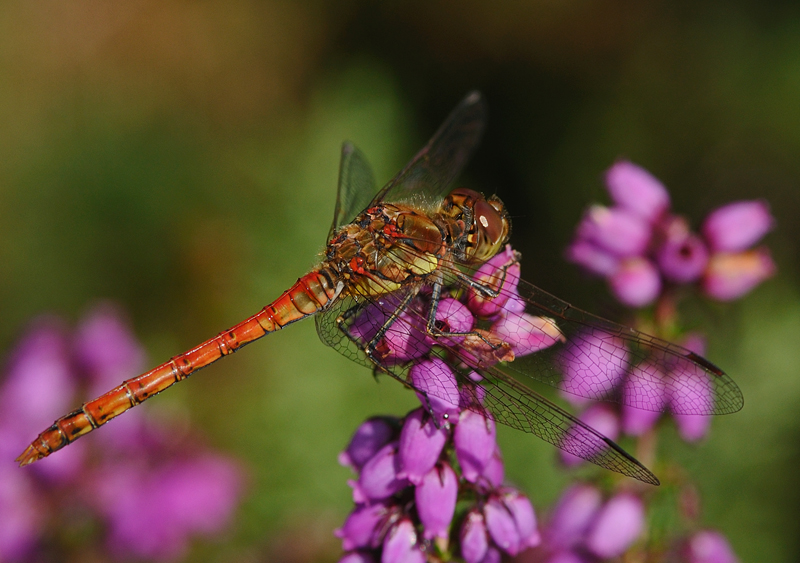
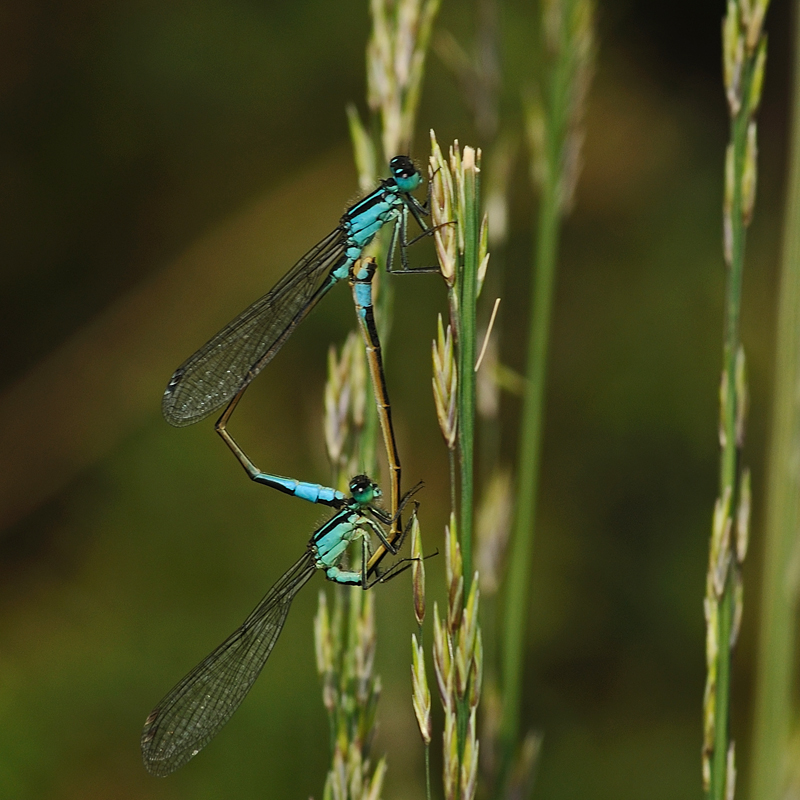
Afterwards I travelled the short distance to Kilwood Copse and have to say the whole experience was very disappointing. Nothing significant, only a few Azure and Common Blue damsels patrolling the small ponds.
In line with DWT’s current management practice the area has now become so overgrown as to be mostly inaccessible. This is a shame as with just a little sympathetic management this could be a wonderful reserve.
Wednesday was full of promise, but failed to deliver. Fine weather with just a smattering of cloud in the morning was IMO perfect for a transect around the paths of Blashford Lakes, but besides the swarms of Common Blue Damsels there was almost no activity.

At the centre pond there were a couple of Red-eyed Damsels among the Common Blues. Before leaving I decided it was about time I explored the northern section. I followed the path as far as the road and doubled back with a detour around the hides. It was here in a sunny clearing I had my first sightings of a Brown Hawker.
There may have been more than one, but I’m inclined to believe it was just the one male patrolling the length of the path. As usual with Brown Hawkers, there was no chance of a photograph.
I decided to move on to Troublefield which provided the best activity of the day. No sooner had I walked through the gate that I disturbed a male Brown Hawker which had been perched perfectly in the foliage behind the electric fence. Unfortunately no sooner had I spotted him off he went – first circling then off over the trees beyond the river!
Shortly afterwards I had a couple of Migrant Hawkers, a Southern and a couple of Golden-ringed. The latter proved more accommodating and in total there were 7 along the back leat.
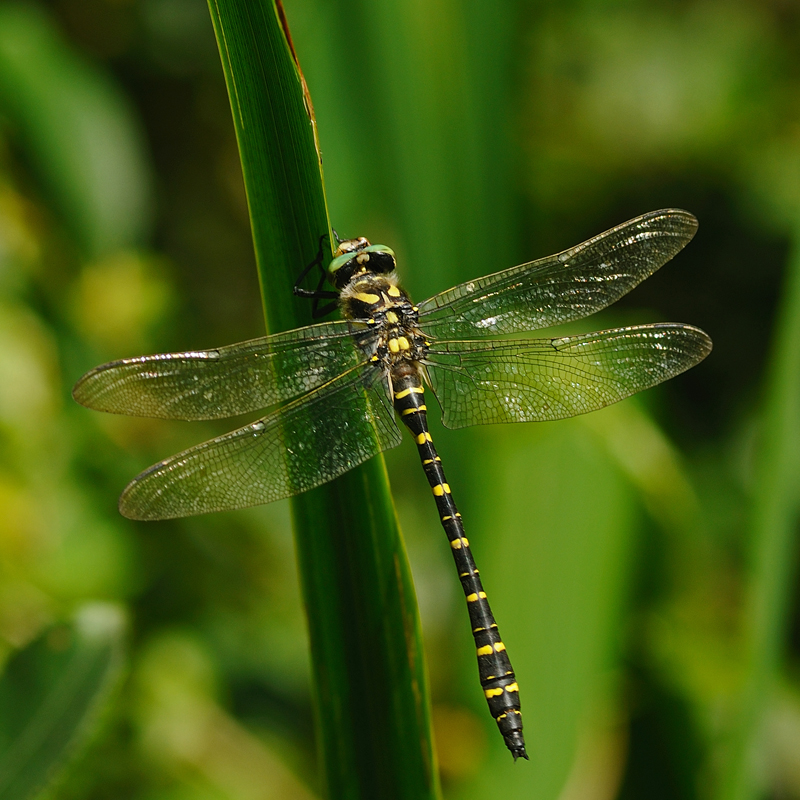
Besides the hawkers there were a good number of Beautiful Demoiselles scattered throughout the reserve. The northern pasture has started to recover from the devastation caused by the cattle two months ago, with some lush grass growth and late blooming wild flowers.
Troublefield turned out to be the highlight of the day and I really should have stayed put, but my trait for endless wander took me to Pennington where the wind was horrendous! Not surprisingly there was little to see, just a few Damsels across the pond and a male Emperor disturbed from his perch.
A brief visit to Cadnam Common late afternoon revealed a couple of Migrant Hawkers hiding within the gorse, but nothing across the pond.
